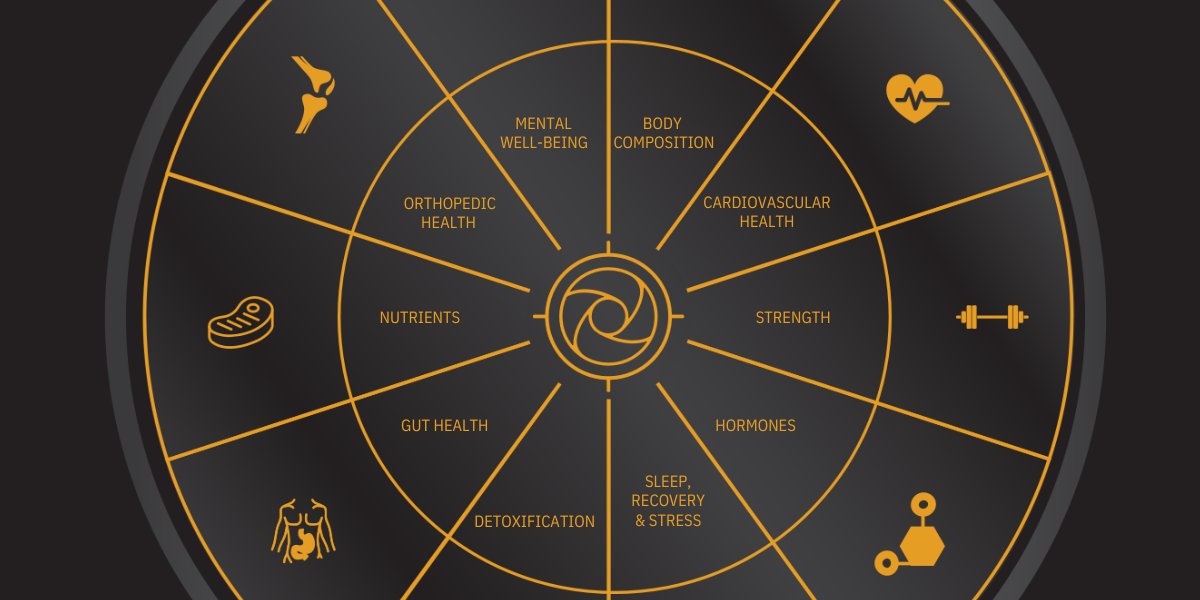Series Review: Blue Zones
If you haven't heard about the trending series Blue Zones on Netflix yet, you are bound to soon enough. Blue Zones, a term coined by National...
.png?width=70&height=70&name=Stark_LogoMark%20(1).png)

In today’s fast-paced digital world, ensuring that children stay active is more critical than ever. Physical activity plays a vital role in the healthy development of kids, helping to build strong bones, muscles, and joints, while also promoting mental well-being. From a growing awareness of childhood obesity and sedentary lifestyles, to competitive youth sports begin earlier and earlier, many parents and coaches are looking for ways to keep their kids health, active, and safe. One such method gaining attention is youth strength training. But is it safe for kids? Find out here.
For children under ten years old, the focus should be on developing fundamental movement skills. During this crucial period, kids should engage in activities that emphasize coordination, balance, and basic motor skills. Unloaded movements like running, jumping, climbing, and playing various sports are ideal. These activities help reinforce basic movement patterns without the need for additional weights, ensuring that children develop a solid foundation for future strength training.
Engaging in playful, dynamic movements not only makes exercise fun but also helps children develop a love for physical activity. It's important to keep these sessions varied and enjoyable to maintain their interest and enthusiasm. Regardless of their skill level and ability to make a career out of sport, children who enjoy play are more likely to stay active throughout their lifetime. Parents and coaches should encourage kids to participate in diverse activities that challenge different muscle groups and promote overall fitness.
By focusing on basic, unloaded movements, children can improve their proprioception (awareness of body position) and learn to control their bodies effectively. This groundwork sets the stage for more proper muscle activation and structured strength training as they grow older.
As children begin to go through puberty, they can begin to incorporate basic strength training exercises into their routines. At this stage, bodyweight exercises such as push-ups, squats, lunges, and planks are highly effective. These exercises help build strength and muscular endurance without the need for heavy equipment.
Once children demonstrate proper form and control with bodyweight exercises, light weights can be introduced gradually. The key here is to prioritize correct technique over the amount of weight lifted. Teaching proper form is essential to prevent injuries and ensure that children are performing exercises safely and effectively.
Coaches and parents should provide close supervision and guidance, emphasizing the importance of warming up, using appropriate loads, and listening to their bodies. By doing so, young athletes can develop a strong foundation in strength training that will benefit them in the long run.
Once children have gone through puberty, they are typically ready to progress to more advanced strength training. At this stage, they can begin to increase the loads they lift, provided they have mastered correct form and understand proper muscle activation. Exercises such as deadlifts, bench presses, and barbell squats can be incorporated into their routines under the supervision of a qualified coach or trainer.
As teenagers advance in their strength training, it's crucial to continue emphasizing the importance of technique and safety. They should be encouraged to set realistic goals and progressively increase their lifting loads over time. This gradual approach minimizes the risk of injury and promotes steady, sustainable progress.
Strength training at this age can significantly enhance athletic performance, improve overall strength, and boost self-confidence. It also prepares teenagers for a lifetime of healthy fitness habits.
Despite the growing interest in youth strength training, several myths and misconceptions persist. One common concern is that lifting weights can stunt a child's growth. However, research has shown that with proper supervision and appropriate loads, strength training is safe and does not negatively impact growth plates.
Another myth is that strength training is too dangerous for children. When done correctly, strength training is no more dangerous than other physical activities such as soccer or gymnastics. Ensuring that children use proper form, warm up adequately, and avoid excessive loads can mitigate risks.
Additionally, some believe that strength training is only for athletes. In reality, strength training offers benefits for all children, regardless of their athletic abilities. It can enhance overall fitness, improve posture, and reduce the risk of injuries.
The physical and mental health benefits of strength training for children are numerous. Physically, strength training helps improve muscle strength, bone density, and joint health. These improvements can lead to better athletic performance and reduced risk of injuries.
Mentally, strength training can boost self-esteem, confidence, and resilience. Children who engage in regular physical activity often experience reduced stress levels and improved mood. Strength training also teaches discipline, goal-setting, and perseverance—valuable life skills that extend beyond the gym.
Incorporating strength training into a child's routine can also promote healthier lifestyle habits. It encourages a positive attitude toward physical activity, making children more likely to stay active throughout their lives.
To ensure that children reap the benefits of strength training safely, it’s important to follow some key guidelines:
By following these guidelines, parents and coaches can create a safe and effective strength training program that fosters a lifelong love for fitness.
Youth strength training, when done correctly, offers a multitude of benefits for children, from improved physical health to enhanced mental well-being. By focusing on age-appropriate exercises, teaching proper form, and emphasizing safety, parents and coaches can help children develop strong, healthy bodies and minds. If you’re interested in learning more about youth strength training or have any questions, know that Stark is always here to help!

If you haven't heard about the trending series Blue Zones on Netflix yet, you are bound to soon enough. Blue Zones, a term coined by National...

At Stark, we believe that true health encompasses far more than just physical fitness. It's about achieving a harmonious balance across all aspects...